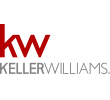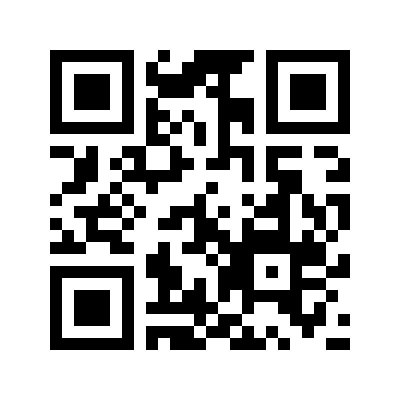Federal & State Programs That May Help Those Facing Foreclosure
Making Home Affordable Program
Designed to assist families who may face foreclosure, the federal Making Home Affordable Program was launched in March, 2009. Program options for homeowners are dependent on certain qualifications of both the homeowner and the particular loan product.
Here are the key elements of the Program
-
The Home Affordable Refinance Program. Under this program, eligible borrowers may refinance loans that Fannie Mae or Freddie Mac own or guarantee. The program can help homeowners who are current in making loan payments and have loan-to-value ratios (LTVs) above 80 percent but not more thatn 125 percent. This program could help owners avoid future increases in monthly payments. This program ends in June, 2010.
-
The Home Affordable Modification Program. This program is limited to homeowners who are at risk of default or already in default, and who have loans at or below the maximum GSE conforming loan limit ($417,000 in Illinois). The program makes use of incentives for lenders/services to share the cost of reducing mortgage payments from 38 percent of gross monthly income to 31 percent. Loan modifications under this program may be made until December, 2012.
The easiest way for borrowers to find out if they have a Fannie Mae or Freddie Mac loan is to go to www.MakingHomeAffordable.gov and clisk on "loan look up." Also, the Making Home Affordable website has a questionnaire that analyzes whether a homeowner is eligible for loan modification or refinancing and points them toward the next steps.
Other elements of the Making Home Affordable Program include:
Foreclosure Alternatives Program. This program will provide incentives for servicers and borrowers to pursue short sales and deeds-in-lieu of foreclosure in cases where the borrower is generally eligible for a Making Home Affordable modification but does not qualify or is unable to complete the process. The short sale process will be streamlined with standardized documentation, cash incentives to lenders, and a moving allowance payment to borrowers. Eligible homeowners can be accepted through December 31, 2012.
Home Price Decline Protection Incentives. This will provide lenders additional incentives for modifications where home price declines have been most severe and lenders fear these declines may persist.
Go to: www.makinghomesaffordable.gov
Finally Home
Finally Home is a state program that was established by Illinois State Tresurer's Office in 2002 to help Illinois residents buy a home, or to keep their existing homes from going into foreclosure. Since that time, more than $35 million in loans to over 450 families have been guaranteed. The Finally Home program guarantees 10 percent of a borrower's mortgage to the lender in situations where the borrower would otherwise be unable to qualify. The program is designed to assist both prospective homebuyers who are unable to secure a conventional, affordable mortgage as well as current homeowners who are having trouble refinancing because they are slightly behind or are at risk of falling behind on mortgage payments due to financial hardships or adjustable rate resets. Borrowers must demonstrate an ability to resume making payments.
Borrrowers must meet different eligibility requirements based on whether they plan to purchase a home or refinance a mortgage. The requirements and directions on how to apply for our mortgage guarantee can be found by visiting www.treasurer.il.gov
Borrrowers must meet different eligibility requirements based on whether they plan to purchase a home or refinance a mortgage. The requirements and directions on how to apply for our mortgage guarantee can be found by visiting www.treasurer.il.gov
Home Affordable Foreclosure Alternatives Program (HAFA)
In 2009, the Treasury Department introduced the HAFA program to provide a viable option for homeowners who are unable to keep their homes through the existing Home Affordable Modification Program (HAMP). The HAFA program takes effect on April 5, 2010—although some servicers may implement it sooner, if they meet certain requirement--and sunsets on December 31, 2012.
HAFA provides incentives in connection with a short sale or a deed-in-lieu of foreclosure (DIL) used to avoid foreclosure on a loan eligible for modification under the HAMP program. Servicers participating in HAMP are also required to comply with HAFA. A list of servicers participating in HAMP (including HAFA) is available at: www.makinghomeaffordable.com/contact_servicer.html.
HAFA Provisions
- Complements HAMP by providing a viable alternative for borrowers (the current homeowners) who are HAMP eligible but nevertheless unable to keep their home.
- Uses borrower financial and hardship information already collected in connection with consideration of a loan modification.
- Allows borrowers to receive pre-approved short sales terms before listing the property (including the minimum acceptable net proceeds).
- Requires borrowers to be fully released from future liability for the first mortgage debt (no cash contribution, promissory note, or deficiency judgment is allowed).
- Uses standard processes, documents, and timeframes/deadlines.
- Provides the following financial incentives:
-
$3,000 for borrower relocation assistance;
-
$1,500 for servicers to cover administrative and processing costs;
-
Up to $2,000 for investors who allow a total of up to $6,000 in short sale proceeds to be distributed to subordinate lien holders, on a one-for-three matching basis.
Requires all servicers participating in HAMP to implement HAFA in accordance with their own written policy, consistent with investor guidelines. The policy may include factors such as the severity of the potential loss, local markets, timing of pending foreclosure actions, and borrower motivation and cooperation.




